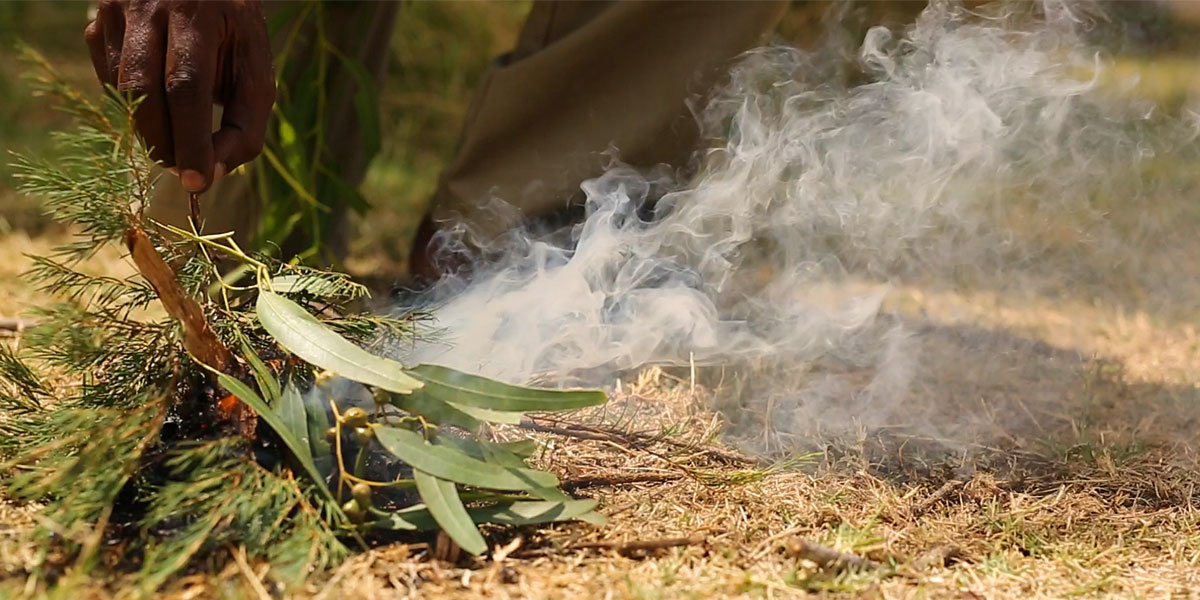Welcome to Country is a ritual or ceremony performed to visitors. It acknowledges and highlights the cultural significance of the ancestral country to the local Aboriginal people - the Traditional Owners of the land.
This acknowledgement has been a cultural protocol for thousands of years and is still a strong traditional practice in many Australian communities today. For the Aboriginal people, the meaning of 'Country' is more than just a connection to land, as Professor Mick Dodson explains:
When we talk about traditional Country, we mean something beyond the dictionary definition of the word. We might mean homeland, or tribal or clan area, and we mean more than just a place on the map. For us, Country is a word for all the values, places, resources, stories and cultural obligations associated with that area and its features. It describes the entirety of our ancestral domains. While they may all no longer necessarily be the title-holders to land, Aboriginal and Torres Strait Islander Australians are still connected to the Country of their ancestors and most consider themselves the custodians or caretakers of their land.
Incorporating Welcome to Country whenever and wherever possible, shows respect by upholding Aboriginal cultural protocols and endorsing the fact that every day we live, work, and play on Aboriginal lands. Since 2008, a Welcome to Country has been officially incorporated into the ceremonial opening of the Parliament of Australia, occurring after each federal election.
Aboriginal Welcome to Country can only be performed by the Traditional Owners, or by nominated Aboriginal representatives who have been given their permission to welcome visitors to their country. Cultural protocols are wide and diverse, and will vary according to region and locality. The form of welcome is negotiated between the Traditional Owners and the event organisers. For example, it may consist of a single speech, or it may include some type of performance involving song, dance, didgeridoo etc., a smoking or cleansing ceremony, or it may be a combination of these.

It is important to ensure that Welcome to Country is staged at the opening of the event, preferably as the very first item, and that the Aboriginal representative(s) are comfortable with the location and arrangements for the ceremony.
Acknowledgement of Country
If a Traditional Owner is not available to stage a Welcome to Country, an Acknowledgement of Country can be included - ideally during the welcome/opening presentation at the start of the event. There are no fixed protocols for the wording of an Acknowledgement of Country, but the following examples are quite broadly used:
Generic — this should be used if you don’t know the name of the people on whose land you are gathered, or if there are multiple Aboriginal peoples who identify as Traditional Custodians for that area:
'I'd like to begin by acknowledging the Traditional Custodians of the land on which we <gather/meet> today, and pay my respects to the Elders past and present. I extend that respect to Aboriginal and Torres Strait Islander peoples here today.'
Specific — this should be used where you know the name of the people on whose land you are gathered:
'I'd like to begin by acknowledging the <insert name of people here (e.g. Ngunnawal)> people, Traditional Custodians of the land on which we <gather/meet> today, and pay my respects to the Elders past and present. I extend that respect to Aboriginal and Torres Strait Islander peoples here today.'
General (Australia wide – webinar / website / printed material):
'In the spirit of reconciliation the [organisation] acknowledges the Traditional Custodians of country throughout Australia and their connections to land, sea and community. We pay our respect to the Elders past and present and extend that respect to all Aboriginal and Torres Strait Islander peoples today.'
How to Arrange a Welcome to Country
WAITOC is an initial first stop to assist with identifying the Traditional Owners if your event location is in Western Australia. You can also browse our Cultural Languages Map to hear some short welcome messages from around the state.
Another useful info tool is the online list of PBCs (Prescribed Body Corporates) who act as a bridge between traditional owners and the broader community, managing their interests in line with traditional laws and customs. You can search by state and click on the PBC to view a map of the related country here
Contact should be made as early as possible for the planning of the event. The choice and number of performers is agreed between the Traditional Owners (or their appropriate representatives) and the event organisers. The fee will vary, depending on the number of performers and the type of ‘Welcome to Country’ provided.
It is strongly recommended that the Welcome to Country negotiated between the event organiser and the traditional owner/s is clearly formulated and agreed in writing.
